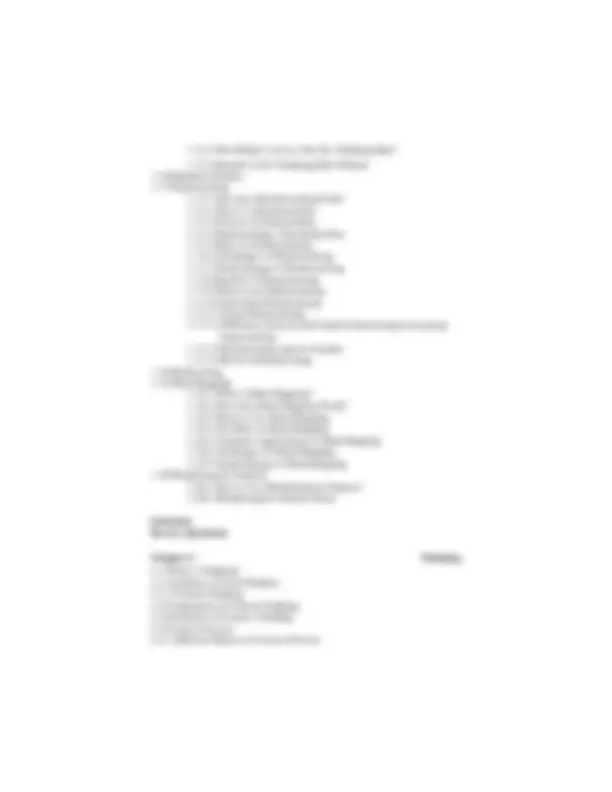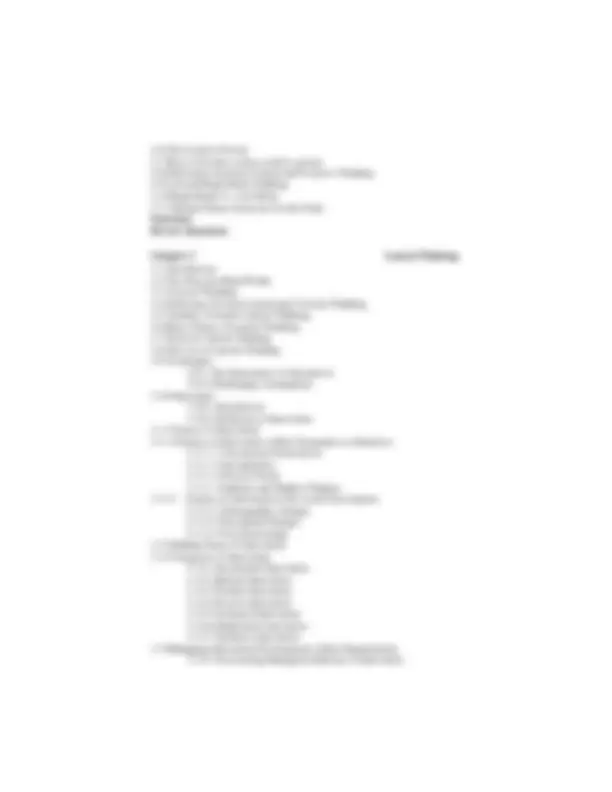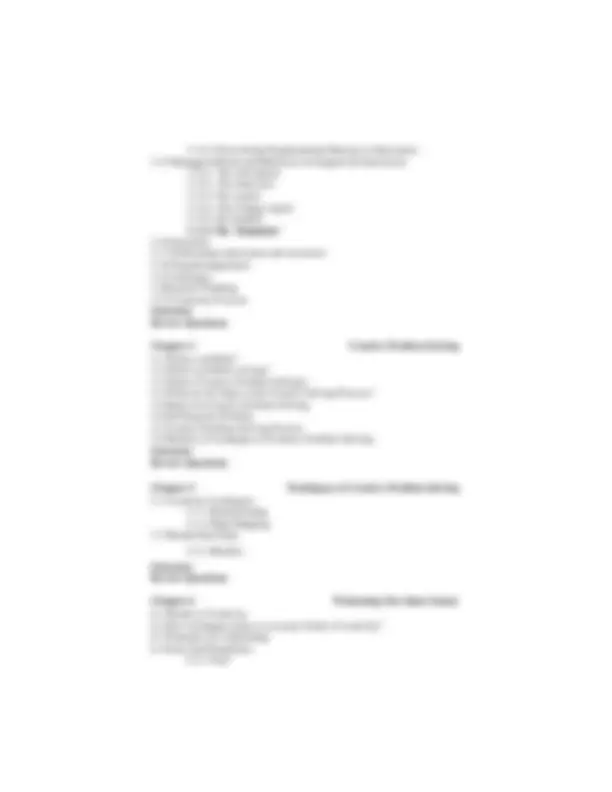





Study with the several resources on Docsity

Earn points by helping other students or get them with a premium plan


Prepare for your exams
Study with the several resources on Docsity

Earn points to download
Earn points by helping other students or get them with a premium plan
Community
Ask the community for help and clear up your study doubts
Discover the best universities in your country according to Docsity users
Free resources
Download our free guides on studying techniques, anxiety management strategies, and thesis advice from Docsity tutors
Text Book - Text Book
Typology: Study notes

Limited-time offer
Uploaded on 10/02/2015
3.3
(29)17 documents
1 / 6

This page cannot be seen from the preview
Don't miss anything!





On special offer
Head of the Department Department of Computer Applications & Post Graduate Department of Information Technology Mazharul Uloom College, Ambur – 635 802, Tamil Nadu, INDIA.
Chapter -1 Creativity
1.1 Introduction 1.2 What is Creativity? 1.3 Definitions 1.4 Main Components of Creativity 1.5 Individual and Group Creativity 1.5.1 Individual Creativity 1.5.2 Group Creativity 1.6 Creativity at an Individual Level – Brain Processes
1.7 Barriers for Individual Creativity 1.8 Barriers to Organizational Creativity 1.8.1 Lack of Resources and Management Support 1.8.2 Bureaucracy and Red Tape 1.8.3 Functional ‘Myopic’ Thinking 1.8.4 Fear of Taking Risks, Fear of Criticism and a Tendency to Conform 1.8.5 Resistance to Change 1.9 Developing Creativity 1.10 Creating a Climate for Creativity 1.10.1 People 1.10.2 Process 1.10.3 Structure 1.10.4 Tolerate and Encourage Different Viewpoints 1.10.5 Introduce Cross Training 1.11 Convergent Thinking 1.11.1 Benefits of Convergent Thinking 1.11.2 Example: Convergent thinking 1.12 Divergent thinking 1.12.1Benefits of Divergent Thinking 1.12.2 Example: Divergent Thinking 1.13 Difference between Convergent and Divergent thinking 1.14 Idea Generation Techniques: Sparking Creativity 1.14.1 Generating Ideas 1.14.2 Developing Your Ideas 1.14.3 Idea Evaluation 1.14.4 Generation Ideas for Specific Needs 1.15 Thinking Hats Methods 1.15.1 Who Needs Six Thinking Hats?
2.6 The Creative Person 2.7 How to become a more creative person 2.8 Differences between Critical and Creative Thinking 2.9 Left and Right Brain Thinking 2.10 Right Brain Vs. Left Brain 2.11 Mental Fitness Exercises for the brain Summary Review Questions
Chapter 3 Lateral Thinking
3.1 Introduction 3.2 The Way the Mind Works 3.3 Vertical Thinking 3.4 Difference between Lateral and Vertical Thinking 3.5 Attitudes Towards Lateral Thinking 3.6 Basic Nature of Lateral Thinking 3.7 Need for Lateral Thinking 3.8 The Use of Lateral Thinking 3.9 Techniques 3.9.1 The Generation of Alternatives 3.9.2 Challenging Assumptions 3.10 Innovation 3.10.1 Introduction 3.10.2 Definition of Innovation 3.11 Sources of Innovation 3.11.1Sources of Innovation within Companies or Industries 3.11.1.1 Unexpected Occurrences 3.11.1.2 Incongruities 3.11.1.3 Process Needs 3.11.1.4 Industry and Market Changes 3.11.2 Sources of innovation in the social environment 3.11.2.1 Demographic changes 3.11.2.2 Perceptual Changes 3.11.2.3 New Knowledge 3.12 Making Sense of Innovation 3.13 Categories of Innovation 3.13.1 Incremental Innovation 3.13.2 Radical Innovation 3.13.3 Product Innovation 3.13.4 Process Innovation 3.13.5 Extension Innovation 3.13.6 Duplication innovation 3.13.7 Synthesis Innovation 3.14Managing Innovation Development within Organizations 3.14.1 Overcoming Managerial Barriers to Innovation
3.14.2 Overcoming Organizational Barriers to Innovation 3.15 Managerial Roles and Behaviors In Support Of Innovation 3.15.1 The Adventurer 3.15.2 The Innovator 3.15.3 The Leader 3.15.4. The Change Agent 3.15.5 The Enabler 3.15.6 The ‘Animateur’ 3.16 Invention 3.17 Differentiate innovation and invention 3.18 Suspend judgement 3.19 Analogies 3.20 Lateral Thinking 3.21 Creativity Exercise Summary Review Questions
Chapter 4 Creative Problem Solving
4.1 What is problem? 4.2 What is problem solving? 4.3 What is Creative Problem Solving? 4.4 What are the Steps in the Creative Solving Process? 4.5 Rules for Creative Problem Solving 4.6 Defining the Problem 4.7 Creative Problem Solving Process 4.8 Models of Techniques of Creative Problem Solving Summary Review Questions
Chapter 5 Techniques of Creative Problem Solving
5.1 Creativity Techniques 5.1.1 Brainstorming 5.1.2 Mind Mapping 5.2 Mental Gym Quiz
5.2.1 Benefits
Summary Review Questions
Chapter 6 Weakening Our Inner Sensor
6.1 Blocks to Creativity 6.2 How techniques help to overcome block of creativity? 6.3 Strategies for Unblocking 6.4 Fears and Disabilities 6.4.1 Fear?